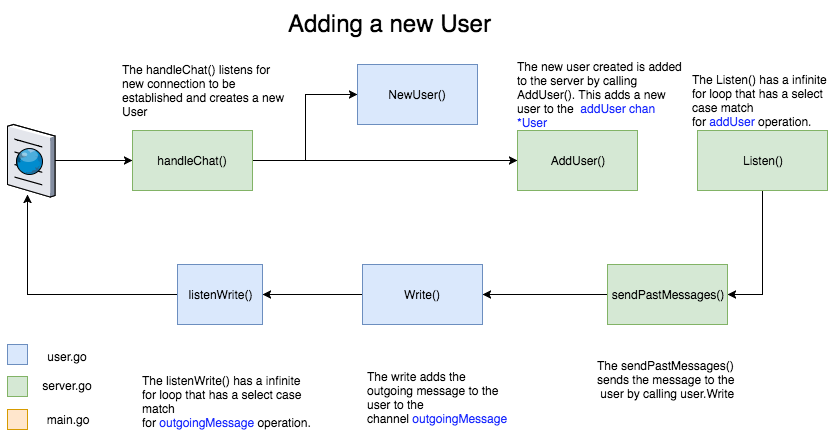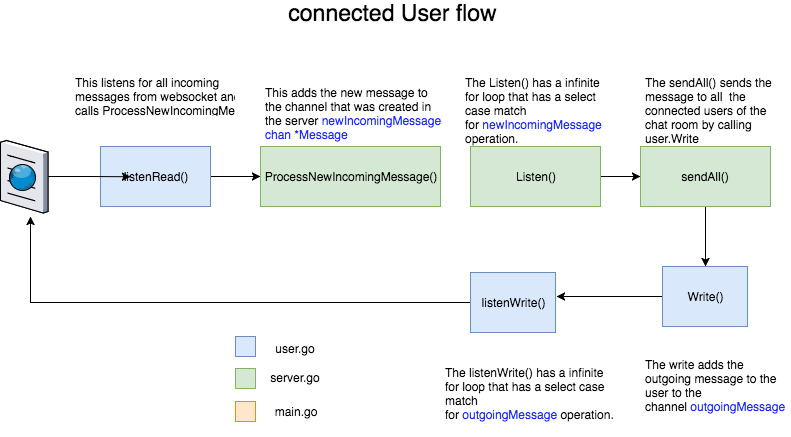This golang chat application is built with help of websocket.
Websocket protocol is bidirectional and extensively matches for building a chat room. In chatroom apps, we need to open an interactive communication session between the user's browser and a server for bidirectional communication of messages. These days most of the popular browsers support websocket , so its best to use websocket.
In this example i am using gorilla websocket lib Instead of using native golang.org/x/net. When i was searching about websockets in golang, this seems to be popular.
Channels are popular in golang for sharing data. In the golang training i took, the trainer was quoting Don't communicate by sharing memory, share memory by communicating. from https://blog.golang.org/share-memory-by-communicating . So Channels are used to share data between different go routines in this example.
| File name | Description |
|---|---|
| main.go | This is startup file. The init() , which by defualt gets called first before main() initializes the necessary configuration such as the server host,port and log files . The main() creates a chat.NewServer type and starts a go routine to listen on the server. Apart from it, the main() also create a webserver and route handler to load the inital page of the application |
| server.go | The server file has Server struct defined with essential fields. The Server glues everything together. server.go has different functions defined for perfoming activities in a chat room such as
Listen() is triggerd as a go routine from main(). The Listen() handles a separate http route /chat which is used by ws protocol for communicating with the server. The Listen() has an infinite for loop that has a select to match case for different channel operations |
| user.go | The user.go is representation of a user. I have a struct defined called User which has the props for the user. NewUser gets created whenever a new websocket connection is established. There are two main functions here listenRead() and listenWrite() that helps in listening for new incoming and outgoing messages. listenWrite() is triggered as a separate go routine |
| message.go | This is a simple struct that defines how a message look like |
| configuration.go | This file helps in setting up the initial configuration of the system by reading the config.json |
| config.json | All the configurable properties are set here |
| chat.html | This is the only html file that defines how the chat app looks like and has JS code to send and recieve websocket frames and display them accordingly |
Flow diagrams (made with https://www.draw.io and data in images/)
This app is deployed to Heroku and can be accessed via https://gauri-golang-chat.herokuapp.com/
- Using https://github.com/tools/godep for managing Dependencies.
- Whenever new Dependencies are added / used, run
godep save ./.... This will update Godeps/Godeps.json with new dependencies and copy the dependencies to vendor directory.
- Get all the current messages from
/getAllMessages

